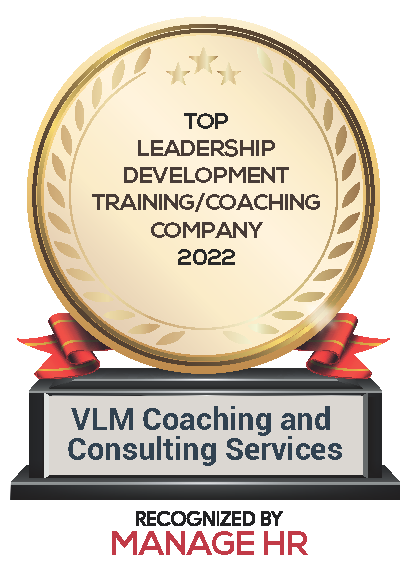Leaders Navigating Change with Confidence: Emotional Intelligence at Work
EQ Helps Leaders Navigate Change

The adage says, “The only constant is change.” That adage has never been more apt than in our current situation in 2025. New influences have been introduced to the workplace landscape in addition to the challenges we were already grappling with. Changes in labor policies triggered by the new presidential administration, rethinking approaches to diversity, equity, and inclusion, as well as the increasing mainstream adoption of workplace technology such as Artificial Intelligence (AI), are bridging the generational divide in the workplace and driving the continued evolution of the hybrid work model. Leaders are tasked with navigating these challenges and changes on the front lines in real time, with little room for error.
Leaders navigate their responses to change and are faced with championing and leading their teams through change. Effective leaders find a way to transform uncertainty into a shared journey of growth, creating environments where innovation and resilience thrive.
How exactly do leaders navigate change with confidence? Just like confidence is an inside job, so is developing the skills needed to navigate these and other challenging times with Emotional Intelligence (EQ). EQ is the cornerstone of resilient leadership in times of change. EQ empowers leaders to understand themselves and their teams more effectively, fostering a culture that confidently embraces change.
Here are five actionable tips to help you harness your emotional intelligence (EQ) to lead effectively during periods of change and transition.
Cultivate Self-Awareness
Take a reflective look at your emotional response to the changes before you. Use the Feelings Wheel to identify your current emotions. Utilize tools such as a brain dump, journaling, mindfulness meditation, and external feedback from others to help you assess your responses and triggers, ensuring that your feelings and emotions aren’t adversely reflected in your decision-making and leadership approach. In times of rapid change, making time for regular self-assessments helps you more easily recognize your feelings, regulate your responses, and remain more adaptable in the face of unexpected change. Your self-awareness practice will help you notice emotional responses within your team members and support them in navigating and processing their reactions and potential resistance to change.
Foster Open Communication
Transparent and empathetic communication builds trust and reduces anxiety among your team. Share your insights about why changes are occurring – whether due to evolving customer demands, technological disruption, or geopolitical events that impact the business landscape. This can set the stage for more inclusive dialogue. Create spaces for open communication where team members feel safe voicing concerns and suggesting ideas. Active listening and regular feedback loops are essential. These practices ease the tension and spark creative solutions to navigate uncertain times. Listening actively to your team’s concerns can uncover innovative solutions and provide sufficient support structures to help the team navigate the change as a unit.
Develop a Change-Positive Mindset
Shift your perspective on change by viewing the challenges as opportunities, not threats. Support your team members in doing the same. Change fatigue is a real thing. The pace and frequency of change can threaten the stability of structures and systems. However, when you and your team view these challenges as opportunities to grow and innovate, the mind faces less resistance to change, making it easier to navigate the change. A change-positive mindset encourages continuous learning and growth, making it easier to pivot when faced with new challenges. By fostering an environment where mistakes are viewed as learning opportunities, you can inspire your team to take calculated risks and drive innovation. Leaders who consistently model optimism and resilience set a tone that can transform a potentially disruptive situation into a stepping stone for progress.
Empower Your Team Through Emotional Support
Recognize that your team may be experiencing a mix of emotions during change. A supportive environment is crucial for maintaining high morale and productivity. Proactively offering emotional support through regular one-to-one check-ins, team meetings, and informal coaching sessions can help your team members build resilience. You will strengthen individual performance and foster collective stability by encouraging a culture where employees can openly discuss their feelings and challenges. Over time, this approach will nurture a robust support system that can withstand even the most disruptive change.
Maintain a Clear Vision
A clear, intentional vision is essential for rallying your team during turbulent times. When the external or internal environment is unpredictable, communicating a well-defined mission and set of goals can provide a steady anchor for your team. Ensure that your vision is not just a statement but a guide that connects daily actions to long-term objectives. This clarity helps your team members understand how their roles contribute to the team and broader organizational success, fostering a sense of ownership and commitment. This clear vision will also serve as a guiding principle to help you maintain momentum throughout the life of the change process.
Beyond immediate tips and strategies, investing in your EQ skills will help cultivate your long-term leadership success. Leaders who develop and operate with high EQ are better positioned to anticipate changes, adapt to emerging trends, and inspire team loyalty. Whether through ongoing professional development, coaching sessions, or collaborative workshops, sharpening your EQ saw is a strategic investment that pays dividends in organizational culture and performance. By prioritizing EQ, you enhance your ability to lead through current changes and build a legacy of sustainable leadership that can evolve with future challenges.
On the surface, these tips may seem simple to implement, but how will you make them your own, remain consistent, and hold yourself accountable? If you are seeking to tailor these recommendations to your unique leadership challenges, I invite you to schedule a complimentary, confidential coaching session with me. Let’s explore how you can leverage EQ to navigate change effectively and foster a thriving, resilient culture within your team and organization. Use this link to book the session.
Embrace change with confidence, knowing you are equipped with the tools to navigate uncertainty effectively. By focusing on developing EQ, you can transform challenges into opportunities for growth, innovation, and lasting success.
Schedule a call using this
link.





